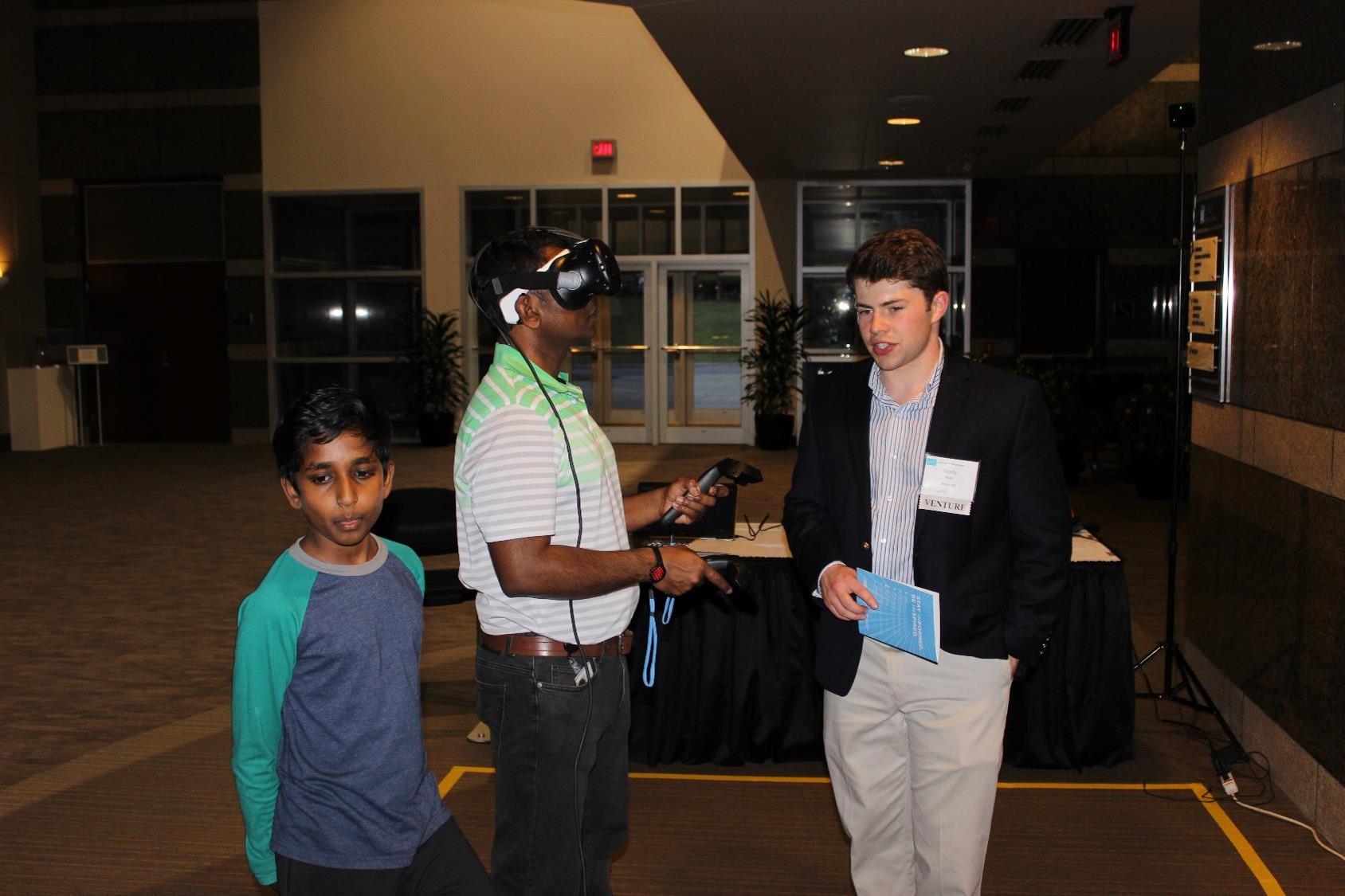


Most people you pass on the street have a general understanding of augmented reality/virtual reality (AR/VR). But a team of undergrads at the University of North Carolina at Chapel Hill, led by Brian Moynihan of the UNC Health Sciences Library, are not only creating a new way of thinking about these technologies, but exploring new possibilities for thinking with them.
The students and Moynihan developed the Brain VR project, which combines electroencephalogram (EEG) data with AR/VR and allows users to control a video game using only their minds. Users train the system by thinking “up” or “down,” enabling them to fly across a virtual landscape using only their thoughts. While many people are familiar with the capabilities of AR/VR, Moynihan wanted to bring this technology into the classroom to challenge students to explore different possibilities for how the technology could be used.